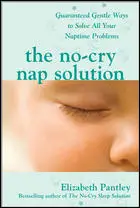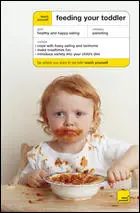I have two great problem-solving books that I was sent this month:
the no-cry nap solution

I was familiar with the author (Elizabeth Pantley) of this book, because I used some of the principles from her no-cry sleep solution book with Michael. Honestly, naps aren’t a big struggle around my household. Both of my sons have their own unique sleep rhythm (i.e. I know that the best time for Sean to have his nap is 5 and ½ hours after he wakes up.). This book is a great resource though if you’re having nap challenges at your home.
The book is primarily written to teach parents how to help children (newborn to around age 6) nap on a consistent basis. Research facts to stress the importance of napping are presented. Tips to help kids nap at various ages are included; nap challenges are discussed and various worksheets are included to help parents come up with a great plan. For parents of older children, I especially like the “hush hour” concept. (Basically, it’s a time for the child to be still and quiet if they’re in the process of or have outgrown their daily nap.) It’s funny, we were implementing this process in my home (we call it “quiet time”) every since Michael outgrew his nap. It’s very helpful (for the child…and mom!) Overall, this book provides some really great practical advice. If your child needs but is resisting a nap, the tips will probably be able to help you.
teach yourself: feeding your toddler

I definitely needed this book. It has been such a challenge getting Sean to eat – period. I love that the premise of this book by Judy More, a pediatric dietician and founder of the Child Nutrition consultancy, is that parents can enjoy feeding their toddlers and be confident that they are feeding them well.
Not only does the book tell what nutrients your toddlers need, but it also provides practical trips regarding what to do (and not to do) in regards to feeding them. The biggest “don’t” that I had to change was using certain foods as “rewards” for eating others. (It makes the “treat” seem more desirable.) I was also intrigued to read that all toddlers need vitamin supplements with vitamin A and D in them, especially toddlers with darker skins. (Did you know that toddlers of color don’t make vitamin D in their skins as efficiently as white toddlers?!) Recipes and dealing with special situations (i.e. vegetarian toddlers) are also covered. I can’t say that this book has solved all of our food challenges, but it has (at least) left me a lot more hopeful. That’s no small thing!
(To read about what others are reading this month, visit What’s on Your Nightstand.)